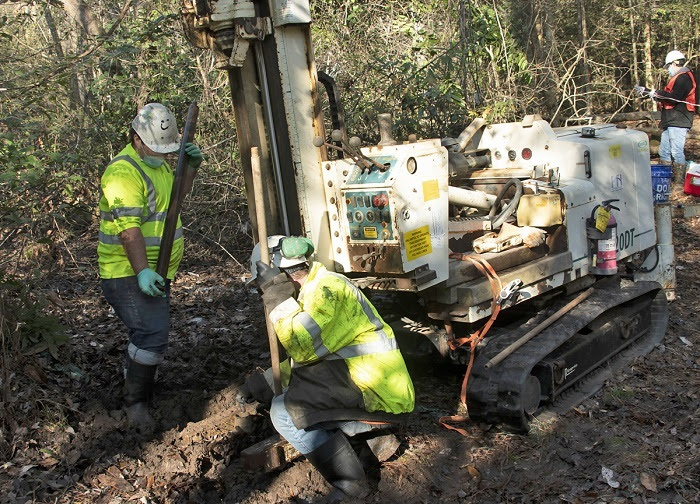
ALTEMIS team-member, Hansell Gonzalez-Raymat, was featured in the Office of Environmental Management’s April Newsletter for their work employing innovative solutions to protect soil and groundwater. Read the highlight below.
Savannah River Site Employs Innovative Solutions to Protect Soil, Groundwater
AIKEN, S.C. – An EM cleanup technology is expected to reduce radioactive iodine-129 found in soil and groundwater near the center of the Savannah River Site (SRS) to levels well below regulatory limits.
Since 2019, EM’s environmental cleanup program at SRS has used an innovative process developed by EM contractor Savannah River Nuclear Solutions (SRNS) that uses silver chloride, a conventional industrial product, to immobilize iodine-129. The cleanup technology does not generate waste and requires no power.
Extensive studies confirm that injecting silver chloride beneath a portion of the site reduced up to 50% of iodine-129 during pilot program field tests.
“The silver can capture and lock into place a high percentage of the iodine nuclides, reducing the amount of contamination in the groundwater,” SRNS Area Cleanup Projects Engineer Jeff Thibault said.
Ultra-fine particles of silver chloride are specially milled by an off-site vendor to create highly irregular edges, which greatly increases the surface area of the particles. The material is mixed with water and injected into the water table 30 to 60 feet below the surface. Workers have injected a total of 240,000 gallons of water and 165 gallons of silver chloride.
At SRS, iodine-129 was created during the production of plutonium and tritium throughout the Cold War era.
Working with Savannah River National Laboratory (SRNL) scientists, SRNS is striving to prevent the remaining iodine-129 from moving into nearby wetlands in large quantities.
Current treatment relies on chemicals, such as silver chloride, and soil to work together to bind the iodine to sub-surface sediment, prior to it reaching the wetlands.
“Once this plume fully enters the marsh, treatment, much less immobilization of the iodine, becomes much more difficult,” Thibault said. “There’s no sediment. We’ve gone from mud-like sediment to working with organic material and the water of the marsh.”
SRNL Geochemist Hansell Gonzalez-Raymat said workers have completed shallow drilling for soil samples in the affected wetlands.
“The data collected from the samples will help us to determine how the iodine will interact with the organic matter and surface water found within SRS wetlands. This research will lead to the future development of a strategic treatment plan that can be submitted to the South Carolina Department of Health and Environmental Control for approval,” he said. “This is part of a larger project within the site’s F Area that is partially funded by the EM Office of Technology Development.”
Thibault said SRNS is working to make the project “passive,” requiring minimal maintenance and use of little to no electrical energy.
“We are looking at the possible use of silver chloride, along with other cleanup technologies, to continue the level of success we’ve experienced in the past. We are confident we’ll protect our wetlands,” he said.
-Contributor: DT Townsend
